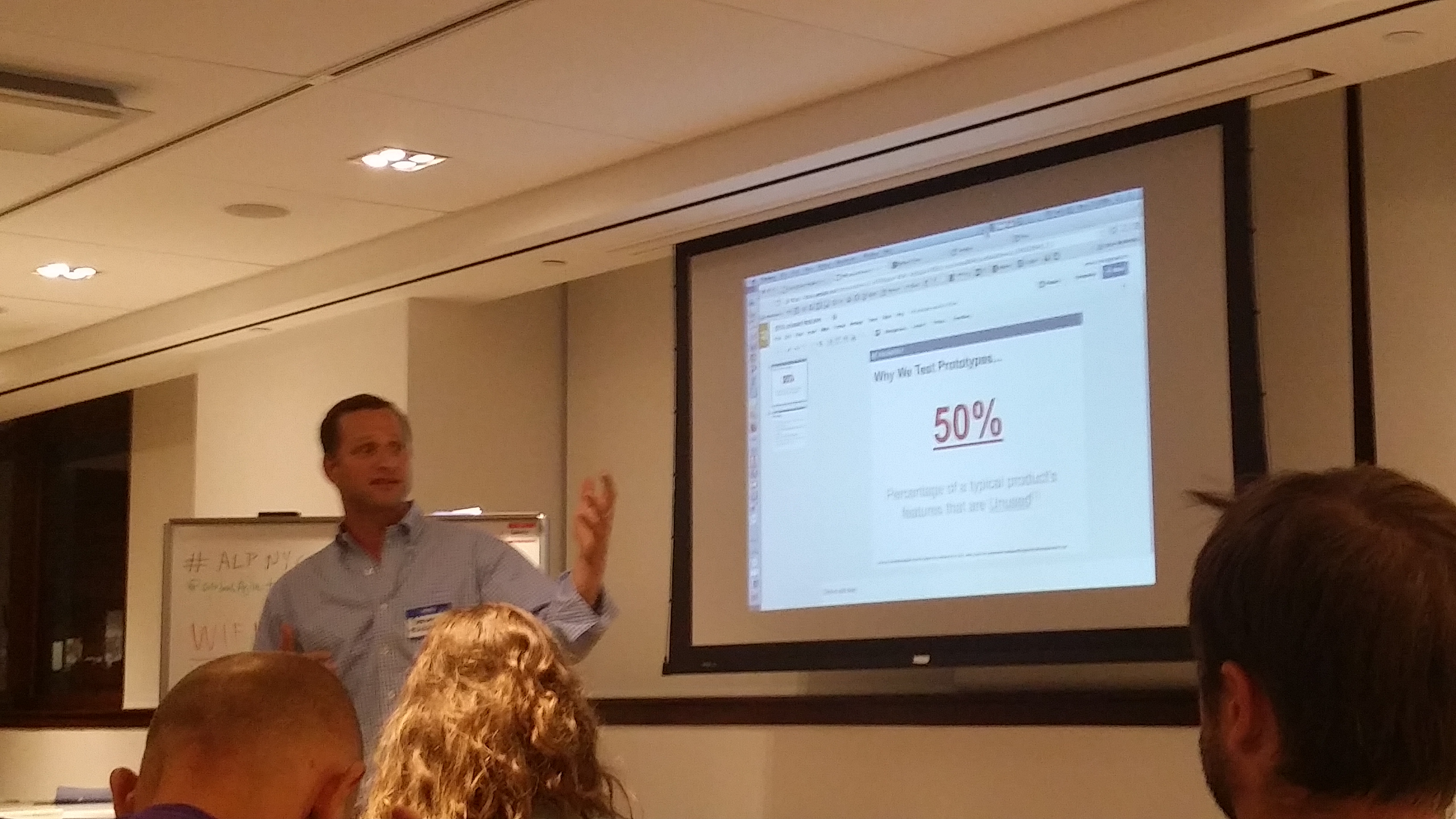How not to overdo on your site or app’s features
By Dennis Clemente
If studies indicate 50 percent of a product’s features go unused, how do you make sure you don’t overdo it? The answer is quite obvious: You need user testing. What’s less obvious is how you go about this process.
At the Kaplan Center last September 22, The Agile/Lean Practitioners group brought back Danielle Tomson of the Occum Group and Steven Cohn of Validately to discuss various ways of gaining user insights from the prototyping stage.
Tomson said there are three types of user tests: desirability, usability and feasibility.
In terms of desirability, she said it’s important to interview, observe, survey and A/B test. When interviewing, ask for open question, making sure to dig deep.
“Instead of telling the user what specially needs to be done, give them a task,” she said. “Ask the user what he expects to happen. What’s in it for them?”
Breaking it down, asks the what, when and how questions. Does the user want to use it? Would they use it? How would they use it? When is it essential in the early phase and in creating new features on old products? How is the minimum viable service (.i.e. test the service before the product, figure out the interviews, surveys, paper prototyping)
Quantity is not always quality when it comes to number of users. Tomson adheres to Jacob Nielsen’s five-user test method: test more users if they are in a highly different group (egg. 5 students and 5 teachers). Read more here http://www.nngroup.com/articles/why-you-only-need-to-test-with-5-users/
As for usability, ask what does the product fulfill in the user’s needs? Why and why not? Do the features or UI/UX enable them to do so? Does the product do what you intended? Figure out how what tools to track behavior.
As for the feasibility part, ask how this feature can achieve business goals?
Constantly validate, but Tomson says it’s also important to keep two things in mind: the goal and hypothesis. “A goal is something you hope to achieve—what do you want the behavior to be? A hypothesis is something you think will happen—what do you believe the behavior will be?”
Cohn talked next about his startup Validately and how it is supposed to recruit users, create tests and get rapid feedback for different types of prototypes. Demonstrating Validately’s functions, he shows how it can show both low fidelity and high fidelity, including support for Axure and Balsamiq. With Axure, he said you can just add in the URLs and test the prototype on Validately. For safety, he said you can create a non-guessable URL to send to just a few people.
Overall, the validation site should be able to gauge desirability, measure usability, test the look and feel and make custom tests.
Cohn’s key takeways about user testing involved the following:
• Test what people do in their native environment
• Filter qualitative feedback based on actions
• Test on customer segments
• Be open to data
